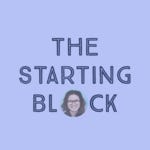The 171st Block: Sociopolitical disinformation
And no wonder AI language models are biased
This week…
Your reading time is about 6 minutes. Let’s start.
Calum Jaspan reports for The Sydney Morning Herald that Australia’s SBS is rolling out five new digital language services, including Telugu and Malay. I know Australia is a popular country for Malaysian emigrants, but I have a completely non-scientific feeling that not many of them actually prefer media services in Malay.
And now, a selection of top stories on my radar, a few personal recommendations, and the chart of the week.
ICYMI: The Previous Block was on externalities, and what could replace the Turing test. CORRECTION NOTICE: None notified.Global Affairs says disinformation operation targeted MP Michael Chong on WeChat
Richard Raycraft for CBC News:
In a media statement Wednesday, [Michael] Chong called the operation targeting him "another serious example of the communist government in Beijing attempting to interfere in our democracy by targeting elected officials."
He said the federal government needs to take more action to combat foreign interference.
"They have failed to introduce a foreign influence registry for those being paid to act on behalf of hostile foreign governments. They have failed to give our intelligence and law enforcement agencies the resources and tools they need to do their jobs," he said.
"And despite the removal of a single diplomat from Beijing who was involved in foreign interference activities, they have failed to identify and remove other agents of Beijing who have interfered in our democracy or targeted Canadian citizens for harassment or abuse."
Chong said news of the operation further strengthens the case for a public inquiry into foreign interference.
I don’t know how many ways you can say this, but “the Chinese” are not homogeneous.
Staged videos fuel religious hate and misogyny in India
Akhil Ranjan for BBC:
These dramatised videos are accompanied by disinformation tactics which may confuse viewers on social media. Some have disclaimers but they may be hidden in the middle or the end of the videos.
Most times, the text is in English, which is not always understood by viewers.
According to a fact-check by Alt News, the original clip of the man wearing a burka - which was later deleted by its creator - actually had a disclaimer stating it was “a work of fiction.” But it was visible only for a second.
Other creators add CCTV templates to make the videos seem more realistic.
One such video, which went viral in December 2021, was shared alongside claims without evidence in multiple languages that Muslim men were trying to intoxicate Hindu girls by spiking their food.
In the comment section below the video, many users appeared to believe it was true, making Islamophobic remarks. "Beware of love jihad," commented a user.
“Love jihad” refers to a conspiracy theory which claims that Muslim men are wooing Hindu women to convert them to Islam.
The Beeb spoke to one of the YouTube channel owners, and he said, “We all want to become a hit. I make videos that do well according to the trends of society.”
AI hysteria is a distraction: algorithms already sow disinformation in Africa
Odanga Madung for The Guardian:
I’ve spoken at length to the “data workers” who train the content-moderation algorithms of Meta’s and TikTok’s platforms. Many of them got post-traumatic stress disorder while on the job and were paid peanuts for it. Similarly, those who carried out the data-cleaning for Sam Altman’s darling, ChatGPT, suffered the same fate – but guess who’s making all the money from this suffering?
“AI doomerism”, as addressed and defined by predominantly white monopolistic capitalists, conveniently selects what to focus on and what to ignore. Kenyans and many other Africans helped make ChatGPT the phenomenon it is today. Its path towards becoming one of the fastest-growing platforms the world has ever seen was fuelled by them.
In essence, they are the ones making Sam Altman and Mark Zuckerberg rich because without them their platforms would be unusable. But I bet Africa’s people don’t even cross the mind of Altman and his colleagues.
What I read, listen, and watch…
I’m reading Anne Shibata Casselman’s essay on Maclean’s on what Canada would look like in 2060.
I’m listening to a CBC’s Front Burner episode on anti-LGBTQ backlash within Canada’s Muslim community. Reminds me much of Tom Perkin’s piece in June for The Guardian, first mentioned in “The 164th Block,” about a Muslim-led city ban on pride flags, which came a few years after liberals celebrated the town’s election of a Muslim-majority council. As someone raised in a non-Western, conservative, religious setting, let me just say, I couldn’ve warned you—but you are not ready for that conversation.
I’m watching Donna Yatz’s video essay on what led to Buzzfeed’s collapse.
Other curious links:
“What a yarn! Journalists are turning to crochet to tell data stories” by Sarah Scire for Nieman Lab.
“When we held up a mirror to Elon Musk’s Twitter/X he tried to sue us into silence” by Center for Countering Digital Hate’s Imran Ahmed for The Guardian.
“AI comes for YouTube’s thumbnail industry” by Nilesh Christopher for Rest of World.
“Un verano sin Instagram: más libertad para pensar y consumir y menos ansiedad” por Irene Sierra en elDiario.es.
« Le libraire, le quiz, le robot lecteur et l’algorithme: comment conseiller le lecteur du XXIᵉ siècle » par Catherine Lalonde dans Le Devoir ($).
Chart of the week
Melissa Heikkilä breaks down the political tendencies of AI language models in a piece ($) for MIT TR. If you face a paywall, the original paper is available online.
And one more thing
The FIFA Women’s World Cup started three weeks ago, hosted by Australia and New Zealand. With only one week of competition left, and also because August 9th was International Day of the World’s Indigenous Peoples, I thought I should bring your attention to something, in case you haven’t noticed: Along with flying the Māori Tino Rangatiratanga flag and the Aboriginal and Torres Strait Islander flags in the venues, every hosting city is called by two names — in the country’s indigenous language, and the English alternative.
In Aotearoa (New Zealand): Kirikiriroa (Hamilton), Ōtepoti (Dunedin), Tāmaki Makaurau (Auckland), and Te Whanganui-a-Tara (Wellington).
In Australia: Boorloo (Perth), Gadigal (Eastern Sydney), Meeanjin (Brisbane), Naarm (Melbourne), Tarntanya (Adelaide), and Wangal (Western Sydney).




